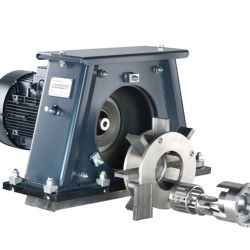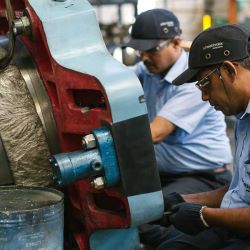We asked, Ron Wright, our Automated Airblast and Peening Expert in North America, four questions about trends and challenges in aerospace manufacturing and MRO. Here are his answers.
Ron, you’ve been working with aerospace customers on improving their shot peening processes for decades. What’s changed during your career?
Customers are asking different questions today. They quite often start with: ‘Show me the numbers.’ They ask for Cpk values (Process Capability Index), repeatability, etc. There is much better knowledge in the industry about shot peening and shot peen forming processes, and measurement methods have improved.
Where customers used to use the equivalent of a tape measure and chalk, we now have spreadsheets and statistical models. And across the aerospace industry, from Tier 2 supplier to MRO, there’s a greater awareness of and obsession with why parts fail. A great deal of analysis is happening that feeds into really controlling the process.
Do changing specifications play a role in this?
Interestingly, specifications have not changed that much at all. What’s changed is that we have better means to meet the specifications ever more tightly, measure the results and do advanced testing. We X-ray for cracks, we quantify pre-compression. All this has led to much stricter interpretation of the spec and stricter enforcement of it across the supply chain.
Shot peening in aerospace is, in general, a safety critical process. MROs, for example - they peen, buff, polish and rework to find and eliminate all potential sources of part failure. And like suppliers on the manufacturing side, they’re subject to much more scrutiny now in terms of the robustness of their processes.
How have you been supporting customers in this?
The ever increasing demands on precision and repeatability of the peening process, be it for landing gear or for turbine blades, have meant that our customers have replaced most of the remaining manual peening tasks with automated processes – which is a key strength here at Wheelabrator.
In fact, when customers enquire after manual airblast equipment today, we quite often have to tell them that they would no longer be able to meet the spec for their application with manual methods. Especially in MRO, this is a big change and a shift in skills. We’ve become a partner in making this shift happen, providing up-to-date knowledge on measuring, testing and process configuration.
Customers value the consistency that comes with automated processes, which takes the ‘dark art’ out of the previously manual process. At the same time, we have to acknowledge that this dark art can be a source of pride for people, so we’re hoping to help them discover the joy of mastery that is to be gained from getting the most out of our machines. And then there are manual processes like flapper peening that won’t be going away any time soon, but that have become much more robust.
Finally, in terms of the overall health of the aerospace industry in North America, what’s your impression at the moment, from conversations with customers?
It’s incredibly healthy. The market is the busiest we have seen in a while with record highs in orders and order backlogs across the sector. Interestingly, until a few years ago, the “big two” dominated customer conversations, but we’re now hearing the names Gulfstream and Bombardier and others a lot more, which might point to a boom in smaller aircraft that might mean higher volumes and steady orders. If that’s a trend, that would certainly be good news for the industry!


